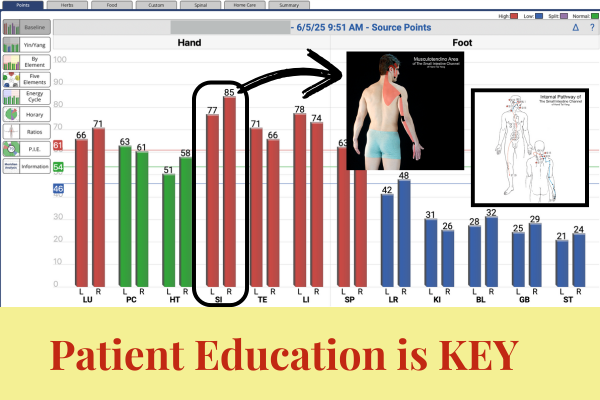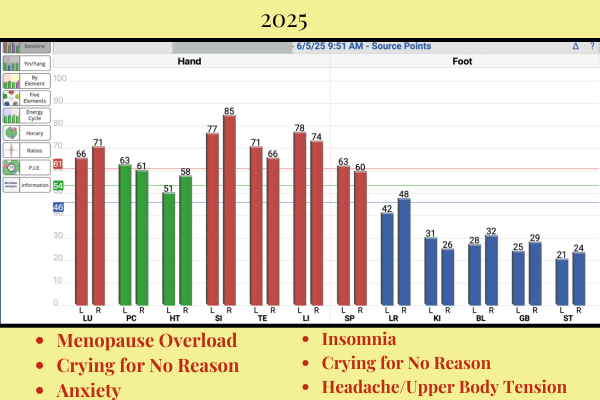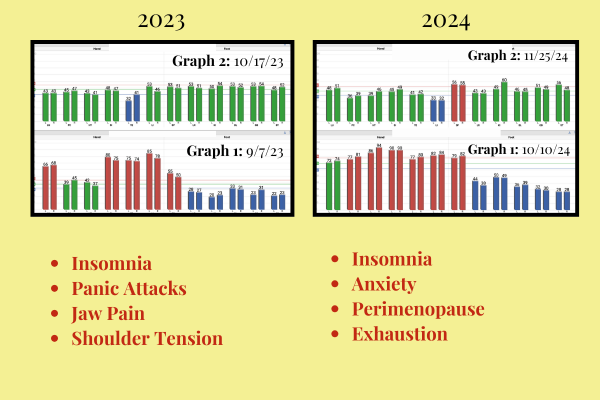🦸♀️ Let’s talk about one of the most underutilized superpowers in your clinic:
Patient education.
And I don’t mean giving a lecture about qi and spleen dampness. I mean truly teaching your patients to understand their bodies—using the acupuncture pathways and the powerful visuals provided by AcuGraph patient education.

AcuGraph: A Window Into the Body’s Story
AcuGraph is more than just a diagnostic tool. It’s a window into a patient’s lifestyle, habits, and hidden energetic patterns. It’s one of the most powerful tools we have for real-time, personalized, and visual AcuGraph patient education.

When the Pathways Speak, Patients Listen
From day one, I teach my patients to see symptoms as signals. Their body is trying to talk—our job is to help them understand the language.
Think:
-
Daily aches and pains
-
Digestive upset
-
Trouble sleeping
-
Hot flashes
-
Feeling “emotionally off”
These aren’t just annoyances—they’re messages.
The graph doesn’t lie. And neither does the body.
When energetic pathways are balanced, 80% of symptoms often resolve. I’ve seen it time and time again in clinic.
Stuck Energy = Stuck Life
Acupuncture pathways run deep—but so do emotional patterns and stress responses. When life gets hard, patients skip meals, sleep poorly, and live in overdrive. Muscles hold memory. Neural pathways hold memory. Meridians hold memory too.
When energy gets stuck, it leads to resistance → stagnation → deficiency. That’s when symptoms show up loud and clear.

A Real Patient Example: Seeing the Pattern
Let me tell you about a favorite patient of mine.
I’ve treated her off and on for years. She always returns when something flares up. On her most recent visit, her symptoms were crystal clear:
-
Menopausal emotional overload
-
Anxiety
-
Sleepless nights
-
Headaches and upper body tension
So I graphed her.

Sure enough, her AcuGraph showed an obvious Dai Mai (belt block) imbalance—a perfect match to her hormonal and emotional symptoms.
Then I pulled up her old graphs:

Same core channels, out of balance, every time. Despite years between visits, her energetic pattern was consistent—revealing her default stress blueprint.
This is the magic of AcuGraph: It doesn’t just show today’s problem—it shows the bigger picture.
The Real Takeaway
Here’s what I want you to remember:
-
The body will always speak up when it’s out of balance.
-
If you teach a patient to listen early, you’ll have a patient for life.
-
The graph doesn’t lie.
We aren’t just acupuncturists.
We are Interpreters. Guides. Mentors. Healers.
And AcuGraph is our Translation Tool.
What Is AcuGraph?
AcuGraph is your secret weapon for building trust, tracking progress, and helping patients understand their own healing.
It’s:
-
A visual diagnostic tool that reveals energy blocks
-
A fact finder that connects symptoms to patterns
-
A progress tracker that shows real results
-
A bridge between ancient wisdom and modern understanding
If you’re ready to empower your patients with clarity and confidence, AcuGraph is the tool to get you there.
💬 Curious if AcuGraph is right for your practice?
Book a free, no-pressure consultation with Dr. Larsen
Get clear answers, expert insight, and zero sales pressure.
Final Thought
If you want your patients to stick around, get better results, and feel empowered in their healing…
Don’t keep the graph to yourself.
Show it. Teach from it. Build trust with it.
Because the graph doesn’t lie—and neither should we.
~Dr. Kimberly Thompson
Healer • Teacher • Mentor